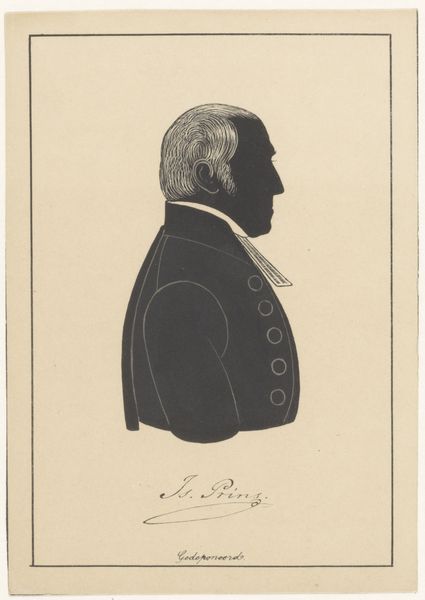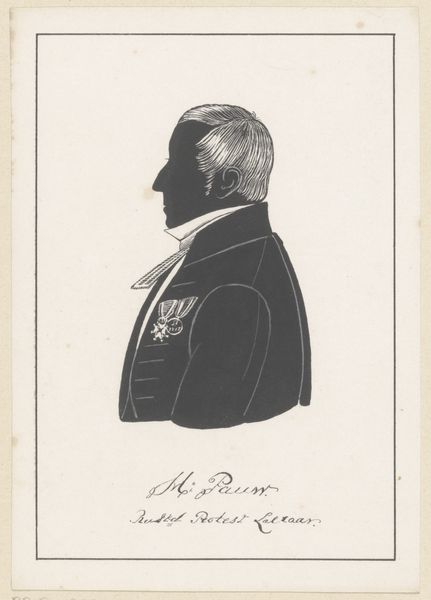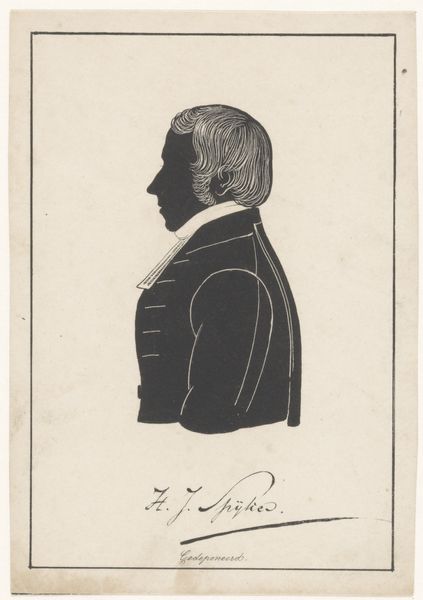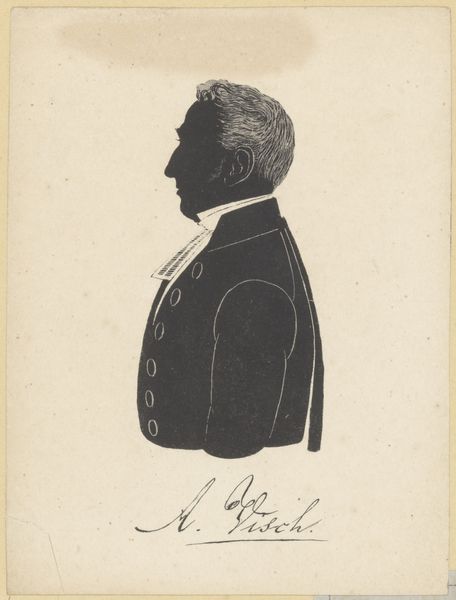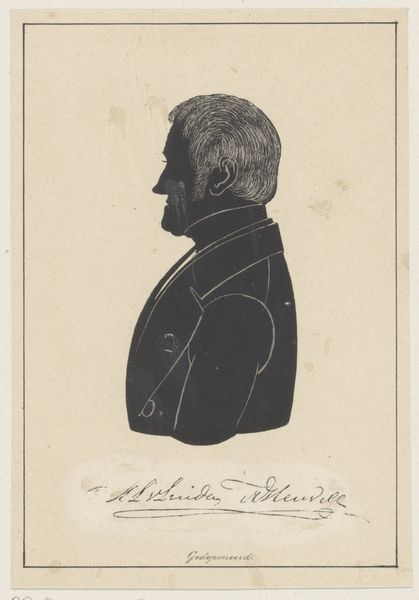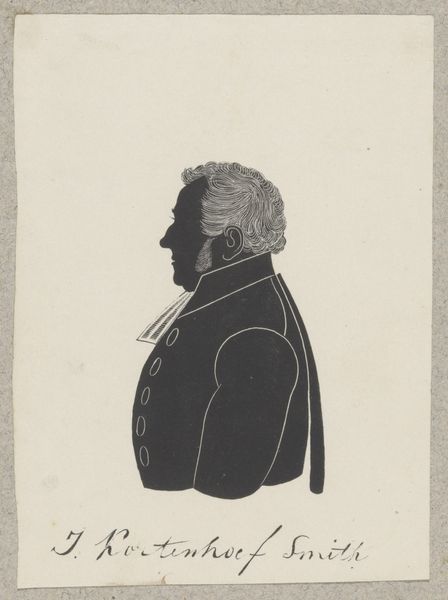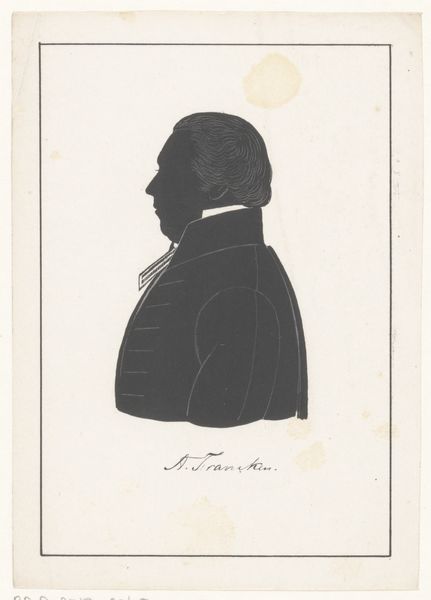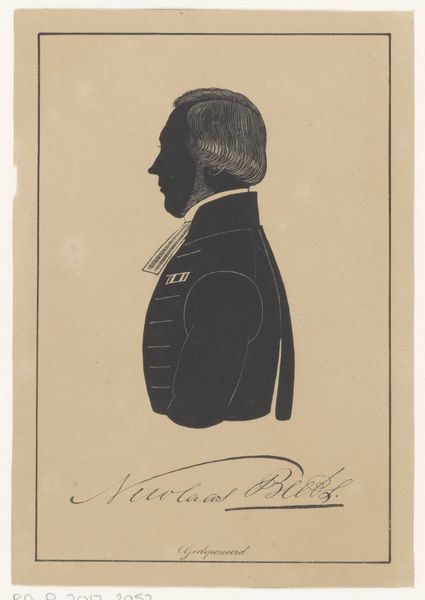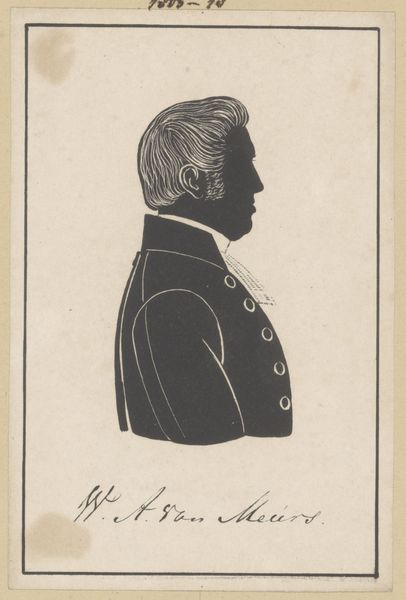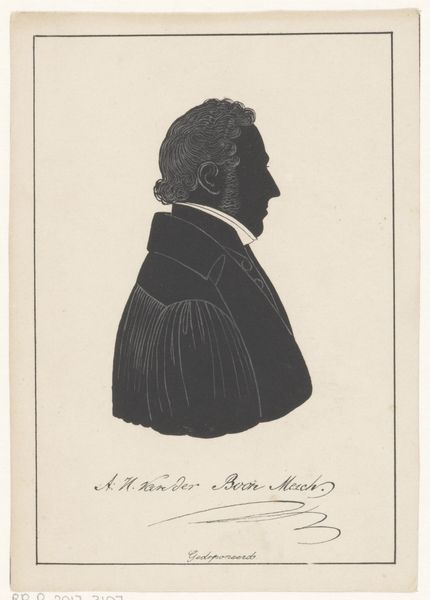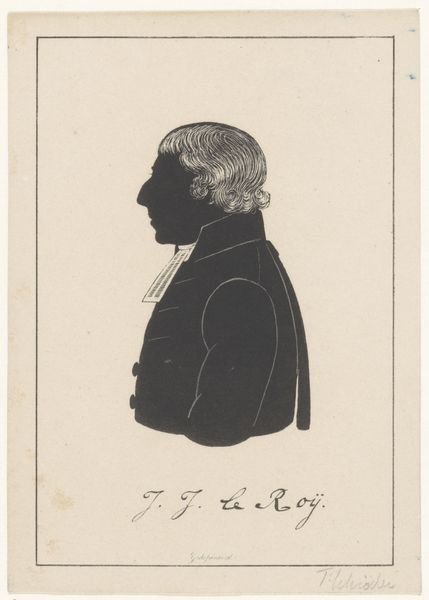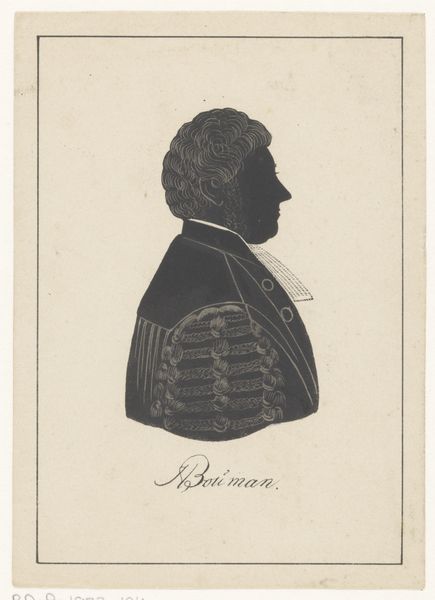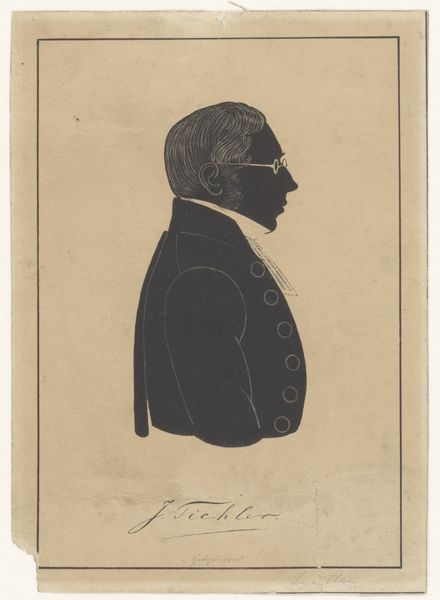
drawing, ink
#
portrait
#
drawing
#
ink
Dimensions: height 152 mm, width 108 mm
Copyright: Rijks Museum: Open Domain
Curator: This is a silhouette portrait of Wilhelm Broes, rendered in ink. Pieter (IV) Barbiers, the artist, likely created it sometime between 1809 and 1848. Editor: My initial reaction is its starkness. That solid black ink against the paper creates a very strong sense of presence, almost theatrical. Curator: Silhouette portraits, especially those using ink wash techniques, speak volumes about the available resources and the societal demand for portraiture during this period. What’s striking is how economical it is, material-wise, while still offering a tangible image of the sitter. Editor: Absolutely. But think of what is communicated through this darkness. We know nothing of the subject's coloring, only his outline. The symbolism then is about distilling someone to their most recognizable, essential form. And that medal--that is intentional to convey honor. Curator: Indeed. It highlights the sitter's public persona over private complexities. Looking at the handwork—the careful detailing of the hair, achieved even within the limitations of ink—emphasizes the craft and labor investment in this type of popular portraiture. It bridged accessibility with skilled artisanship. Editor: To me that stark rendering almost imbues the subject with a sense of stoicism. A public figure, perhaps a military man given that striking order pinned to his jacket, forever caught in this deliberate, timeless pose. It becomes about a memory more than a person. Curator: That makes me wonder if it was meant to mass-produced, a reproduction in service of maintaining Wilhelm's legacy. It makes you consider how these items acted in a culture hungry for remembrance. Editor: It’s fascinating how a relatively simple medium can hold so much symbolic weight, even after so many years. Curator: Ultimately it pushes us to think about the artistic and social function, how the handcraft and material used acted as cultural memory triggers across the passage of time.
Comments
No comments
Be the first to comment and join the conversation on the ultimate creative platform.
